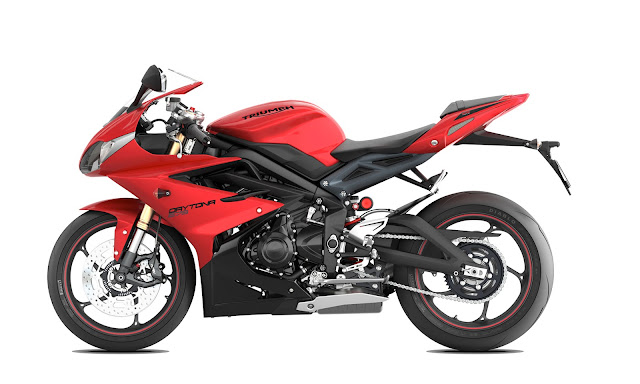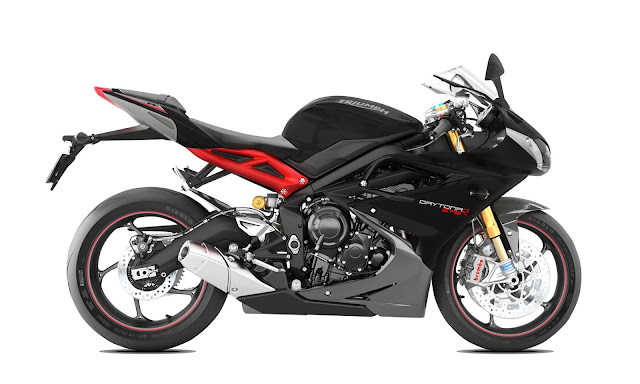Auto Insurance Comparison
If you want to compare auto insurance companies, search 100′s of auto
insurance reviews, and get cheap auto insurance quotes online then all
you have to do is enter your zip code above to get started comparing
free auto insurance quotes!
Convenient transportation is one of the leading reasons to own a
private vehicle, but one unavoidable operating expense for every driver
is sufficient auto insurance. Cheap auto insurance rates may sound
appealing when the monthly bill arrives, but one of the most important
components of any auto insurance policy is the peace of mind that comes
from knowing an auto insurance claim will be paid and your personal loss
will be mitigated.
Refer to the information in this guide prior to choosing a car to
buy, finding a reputable auto insurance company, selecting components of
the coverage, trying to figure out the truth about no-fault auto
insurance laws, and attempting to lower your car insurance rates.
Prior to Vehicle Purchase
Automobiles have an attraction like no other, and most people tend to
purchase more car than is necessary. Even if the actual price is
affordable for the buyer, the cost of insurance may be unmanageable
within the monthly budget. Careful consideration must be given to the
following factors prior to the purchase of that expensive automobile.
Automobile Type & the Affect on Insurance Rates
Every vehicle is rated by the perceived risk associated with
ownership of the car. Insurance companies rate makes and models of every
vehicle style when they are introduced by the automobile manufacturers
and in subsequent years those rating are changed based on actual loss
records. Each style attracts drivers with certain driving
characteristics.
- Four-Door Sedan – This style of car is perceived to
be the safest car on the road, so the annual insurance rates are lower.
Corporations that provide cars to executives will offer four-door
sedans with higher purchase prices because the insurance rates are
substantially lower. Insurance companies know that responsible drivers
tend to choose this vehicle style.
- Sports Car – The number of sports cars that are
stolen each year drives the insurance rates up. Sports car drivers may
take more risks and drive somewhat faster than other drivers, but the
replacement cost of stolen vehicles weighs more on the insurance
companies than repair costs. When repairs are necessary, sports cars
sustain more extensive damage in a collision than other makes and
models.
- Pickup – People use pickups for every imaginable
use which can cause injury and property damage. The insurance agent will
ask specific questions surrounding the intended use of a pickup which
may assist with the annual premium charged. Very large vehicles from
certain manufacturers have high theft ratings that will directly affect
their insurance rates.
- SUV – Sports Utility Vehicles have some of the
highest safety ratings and possess safety features that directly
influence the annual insurance premium. Certain models have ratings that
reflect the increased occurrence of property damage and personal injury
because of the unique uses of these vehicles.
- Hybrid– Most car insurance companies are waiting to
see how hybrid cars are affected by collisions. Concern exists within
the industry about the risk of fire the battery system might sustain or
cause when direct impact is sustained. Two insurance companies, Farmer’s
Insurance and Traveler’s Insurance, offer a 10 percent discount on the
annual insurance premium for a hybrid car.
Make sure you understand how the type of automobile that you choose
can and will affect the cost of your auto insurance coverage.
Additional Vehicle Insurance Considerations
- Price – Higher purchase prices also mean higher
replacement costs in the event of a major accident or theft of the car.
Insurance rates are directly affected by the replacement cost of the
car. Used cars are less expensive to purchase and usually cheaper to
insure, but if the used car is rare, the insurance rate will be higher.
- Safety Features – Vehicles with airbags, roll bars,
crash bars, and automatic seatbelts will be less expensive to insure
because of the effort invested to keep passengers safe in the event of a
collision. Structural reinforcement features also decrease the damage
the vehicle sustains in a crash, which lowers repair costs.
- Anti-Theft Devices – Factory-installed security
systems will reduce the annual insurance premium more than a system that
is added later. Satellite-monitoring systems have reduced the number of
thefts in certain areas of the country, so insurance rates are changing
accordingly.
- Insurance Institute for Highway Safety –
Read the “Insurance Losses by Make and Model” summary sheet information
for each car that might be of interest. These information sheets are
created for a range of model years and provide insight for the potential
buyer to see how the cars are rated for injury, accident, and theft.
How to Choose an Auto Insurance Company
The auto insurance industry is closely regulated by the government,
and every car insurance company must provide information concerning the
health of their company on a quarterly basis. This oversight creates
confidence in the insurance industry’s ability to insure individuals and
company’s against loss. When choosing an insurance company, review the
following ratings for each company of interest.
A.M. Best Company Rating
Since 1905 the A.M. Best Company of Oldwick, New Jersey, has
published A+, A, B+, B, C+ or C grades for every insurance company that
sells insurance across the United States. This report is available at
most public libraries or of course at
ambest.com.
The strongest ratings for insurance companies are stated as, “Most
substantial,” or “Most favorable.” Descriptive words, such as “very,”
are used to indicate companies that are not as strong as the highest
rated insurers. If a qualifier does not precede the company description,
the financial strength of the company is weaker than its peers.
Customer Service/Complaint Ratio
A specific rating scale for customer service departments does not
exist, but one of the ways to know how well an insurance company handles
customer requests and claims is to evaluate the insurer’s complaint
ratio.The
National Association of Insurance Commissioners maintains
statistics from the complaints filed with the state insurance
commissioner in each of the fifty states. A complaint ratio is
calculated when the insurance name and the state name is input. Compare
the company-specific ratio to the national average.
Auto Insurance Coverage
Every auto insurance policy is composed of the coverage types
required by the state that apply to the driver’s situation. An
experienced auto insurance agent will work with the auto owner to
assemble the most appropriate coverage for the best possible annual car
insurance rate. Accurate information should be provided to the agent for
sufficient coverage to be provided without overinsuring the
vehicle. Here is a definition of key auto insurance terms:
- Collision – Damage sustained in a collision with
another vehicle or a stationary object is covered under this component
of the standard insurance policy. Replacement coverage should be
purchased for vehicles that are under an outstanding loan because most
lenders require the insured to cover the risk of loss.
- Comprehensive – If the car is stolen or sustains
damage from falling debris, fire, or any act of nature, this component
of the insurance policy would pay the repair or replacement costs. When
you rent a car, this component covers the rental car throughout the
duration of your rental period.
- Liability – Every state requires that every
licensed automobile is covered by the minimum amount of liability
coverage. Some agents recommend substantially higher liability rates to
cover the possibility of lawsuits that exceed minimum state liability
amounts. Liability coverage is split into two major categories.
- Property – Any property damage to public or private
property that belongs to another party will be covered by the liability
component. Your personal property is not covered under the liability
portion of the auto insurance policy.
- Bodily Injury – When other people are injured in a
collision with your vehicle, including unrelated passengers inside your
car, their medical expenses are covered by this sub-component of the
liability coverage.
- Medical – This component of the auto insurance
policy would cover the medical expenses sustained by you and your
immediate family in the event of an automobile accident. If other health
insurance coverage exists, this coverage may not be necessary, but care
must be given to this decision.
- Uninsured/Underinsured – Even though every driver
is required by law to carry insurance, there are still many drivers that
do not have any insurance or do not carry enough insurance. This UM/UIM
component of the standard insurance policy will cover your expenses in
the event an uninsured driver is at fault in the accident. If a
hit-and-run driver hits your car, or you, this portion of the policy
will cover your expenses.
No-Fault Auto Insurance Laws
Lawsuit awards have increased drastically, and the cost of those
awards leads to increases in the car insurance rates for every person
that holds an automobile insurance policy. As insurance rates increase,
state governments become concerned with the cost of insuring a vehicle.
To restrain the size of amounts awarded through lawsuits, some states
have adopted a modified no-fault system. Under a no-fault auto insurance
system, the following applies:
- Pain and suffering is covered under the existing liability limits of the insurance policy without intervention by the courts.
- Fault is removed as a part of liability decisions, which means that
each insurance company pays for the damage caused by the accident
without waiting for a legal decision. Court costs are eliminated since
legal actions are avoided.
- Payments are made in a timely manner since each insurance company is expected to pay legitimate claims.
- Lawsuits are not permitted until certain levels of loss are
sustained. Each party is immune from lawsuits until the dollar amounts
exceed these thresholds.
Lower Auto Insurance Premium Rates
Aside from the existing features on the automobile at the time of
manufacture, there are ways to lower the annual insurance premium by
considering each of the following options and auto insurance discounts:
- Multi-Car Discounts – When more than one car must
be insured, the agent can recommend the best way to list each vehicle on
a policy. Specific information concerning how each vehicle is used must
be provided. One car that is only driven occasionally will cost less to
insure than a full-use vehicle.
- Multiple Policy Discounts – Home, car, and life
insurance policies that are carried by the same insurance company will
be given a discount on each policy.
- Limited Drivers – Teenage drivers can be expensive
to insure, and one way to lower the impact on the annual insurance
premium is to limit the teenager’s driving to a less-expensive car. The
experienced insurance agent can make recommendations for these
decisions.
- Liability-Only Coverage – Older cars that are not
worth replacing can be driven under a liability-only policy. The cost to
repair some cars would be higher than the value of the car so the
decision to carry liability coverage alone may be prudent.
- Low-Mileage Discount – Cars that are rarely driven
are less expensive to insure because the risk of loss is lower. Usage
information must be provided to the agent to leverage this discount.
- Increase Deductible – If a higher deductible is
affordable within the household budget, raise the deductible paid on
each claim. Consider the deductible on the home insurance policy in
addition to the automobile deductibles since multiple losses can occur
in major natural disasters.
- Maintain Good Credit – People with health credit
scores are rewarded by insurance companies because of the perceived
reliability of these drivers. Insurance companies run credit reports
when calculating the annual insurance premium.
- Clean Driving Record – All moving violations will
increase the annual insurance premium charged by an insurance company.
Speeding and other dangerous driving habits raise the risk of loss for
the insurance company and a higher premium is one of the methods used to
restrain risky habits.
Applying for Auto Insurance
Auto insurance is a necessary aspect of being a responsible driver,
but appropriate coverage can be purchased without carrying unnecessary
auto insurance. Agents are required to include all information that is
provided by the insurance applicant.
Accurate information must be provided because falsifying any entry on
the insurance form can negate the coverage. When the insurance company
discovers the inaccuracy, the policy will be cancelled and any claims
will be denied. The importance of including every driver that will
operate a vehicle on the policy cannot be overstated.
Insurance companies can challenge car insurance claims that are filed
to cover a driver that was intentionally omitted from the policy, which
happens frequently with teenage drivers. Insurance companies have
worked diligently to influence laws that reduce the risk and loss of
income they incur by inaccurate information on policy applications.
Denial of claims will be supported by the courts if proof of intent
can be provided. Always provide accurate information to prevent claim
denial after an incident occurs.
Finding the Best Auto Insurance Rates
To get started comparing car insurance quotes from the best auto
insurance companies – just enter your zip code in right now for a free
auto insurance comparison online!

























